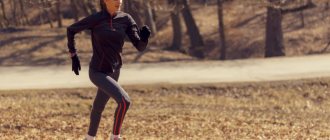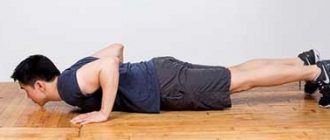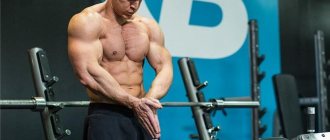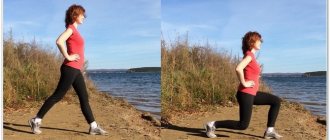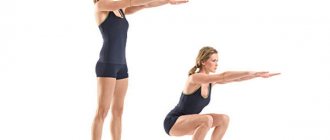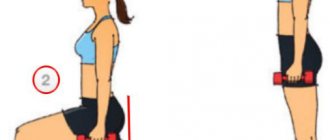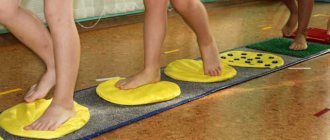We have already done pair training with a medicine ball. And today we have an individual circle with medicine balls Foreman Medicine Ball FM-RMB different weights and calibers.
Let us remind you that training with such a projectile allows you to develop strength, coordination, agility, speed, flexibility and joint mobility. Exercises with a medicine ball are suitable for warming up and complicating basic exercises such as crunches and squats. By working out with a weighted ball, you can burn more calories than during a classic strength training session on machines: after all, many movements with it force you to maintain balance, which means that additional muscle groups are involved in the work.
“It’s not for nothing that medicine balls are very popular in CrossFit,” says Valery Chistyakov , an expert at the FitnessDom company, Ph.D. in karate and hand-to-hand combat. “They are great for intense training and allow you to quickly move from one exercise to another. On the balls, instructors set the trajectory of movements for beginners, people with poor health, and children. And athletes use them to hone the technique of Olympic exercises with a barbell. Taking the weight straight from the snatch is difficult and fraught with injury; the athlete first needs to work on a deep squat, develop flexibility in the shoulder joint, and much more. There is a medicine ball for all this - even with a light ball, the body finds and passes all the necessary points. And only when the bench press technique has been tested to the point of automaticity on the medicine ball, the weightlifter moves to a new level of load - he is given an empty bar weighing 20 kg. A medicine ball is ideal for working on mistakes. For example, only a few people know how to squat correctly. Most often, people lean forward strongly, bring their knees together or, conversely, spread them to the sides, thereby removing the load from their legs and overloading their back. If you perform squats incorrectly from year to year, the front of the thigh works, but the back remains flat. It's unsightly and makes your knees vulnerable. You can set up the technique for this exercise by squatting with a medicine ball, and lunges with it will help balance muscle development.”
Who is suitable for training with medicine balls Foreman Medicine Ball FM-RMB
To each! We have already found out that the medicine ball is a universal exercise machine that allows you to work out the main muscle groups in a mode that is gentle on the ligaments. The ball will give beginners the opportunity to hone their technique, and professional athletes will be able to update their training program and seriously complicate exercises with their own weight. For people with poor health, training with a weighted ball is part of rehabilitation therapy. Almost 2,500 years ago, Hippocrates used leather balls filled with sand to rehabilitate patients after serious injuries.
How to structure your medicine ball workouts
* To keep your muscles toned, do 1 circuit training session with a medicine ball per week, combining it with other cardio and strength training. Do the exercises without rest, one after another, performing 2-5 circles and pausing between them for 60-120 seconds. If you need to lighten the load, change the balls to lighter/bulkier ones. And to complicate the activity, reduce the rest time between circles and increase the number of repetitions.
“People who are elderly or weakened after injuries and illnesses can perform some exercises on their knees,” says Valery Chistyakov. - It's much easier. Start at a level that is comfortable for you, adding one rep with each workout.”
* Select the correct weight and size of the ball. The heavier your equipment, the more difficult it will be to perform squats, lunges and crunches. The smaller the diameter, the more difficult it will be to maintain balance on it in push-ups and planks. If you have just started exercising, for exercises in which a medicine ball replaces a weight, choose a light and small projectile, and if the ball is used as an unstable support for the arms or legs, let it be heavy and bulky.
* Alternatively, several medicine balls can be used simultaneously in one workout. For example, we took three at once: the smallest Foreman Medicine Ball FM-RMB2, weighing 2 kg, for push-ups. The largest Foreman Medicine Ball FM-RMB6 (6 kg) is for squats. And the medium Foreman Medicine Ball FM-RMB4 (4 kg) - for other exercises.
* “Exercise with a medicine ball on warmed up muscles,” says Valery Chistyakov. — Rotational movements in the joints, light jogging (running in place), and “race” on an exercise bike are suitable for warming up. At the end of the workout, you need to stretch your back and hamstrings well, perform bending and stretching exercises, alternating dynamic and static loads.”
[new-page]
Lateral abdominal crunches from a sitting position
Take the ball and sit on the mat with your knees bent and your heels on the floor. Hold the medicine ball with both hands at chest level. Elbows bent and slightly apart, press down on the ball with your palms. Lean your body back so that your abdominal muscles tighten and lift your legs off the floor to an angle of 30-45 degrees. Tightening your obliques and keeping your legs elevated, move the ball to the right and twist after it. Then immediately perform a crunch with the ball in the other direction. Do only 10-15 twists from side to side. Make sure your lower body remains motionless.
Exercises to build explosive strength
There are several of them. First exercise. Your feet should be shoulder-width apart and the medicine ball should be placed in front of your chest. After this you can:
- Squat on your right leg while tilting your torso to the right.
- Roll the ball into your right hand and push it up.
- Catch the ball over your head with both hands at once.
- Do the same thing, but on the other hand and side.
The rest follow.
- Exercise number two. With both hands, immediately throw the medicine ball up one or two meters and then catch it. The weight of the product should be from 1 to 3 kilograms.
- Exercise number three. We sit on the floor and alternately throw the ball from one hand to the other.
- Exercise number four. First, place your feet shoulder-width apart and tilt your torso slightly forward. After this, we straighten up sharply and quickly and throw the ball up in order to catch it later.
- Fifth exercise. While in a squat, we throw the ball up, then straighten up and catch the product.
- Sixth exercise. We sit on the floor, throw the ball up with both hands, then quickly take a position lying on our back, immediately get up and catch the ball.
- Seventh exercise. We spread our arms to the sides and place the ball in our right hand. Then we pass it from one hand to the other directly above the head.
- The eighth exercise strengthens the abs. To do this, lie on your back with your knees bent. Hold the ball near your chest with both hands. Next, you need to perform a standard body lift up. At the top point, be sure to hold the raised body, while tensing the abdominal muscles as much as possible. Then we lower ourselves to the starting position. The shoulder blades should not completely touch the floor.
Circular plank with hands resting on the ball
Take the ball, place it on the floor, lean on it with both hands and move into a plank position with your arms and toes straight. The body from the top of the head to the buttocks should be stretched out in a line, the abdominal and thigh muscles should be as tense as possible, the back should not bend. To better maintain balance, the medicine ball should be positioned directly under the chest. Try to hold this position for as long as you can (preferably 30-60 seconds). Then, holding the ball with your left hand, move your right hand to the floor, simultaneously moving your body to the right. Distribute your own body weight evenly and hold this plank for a few seconds. Return to the starting position on the ball. Change your supporting hand and shift your body to the left. Perform 5-10 transitions or as many as your training allows.
Medball. Shoulders and arms
16. Balloon flight
Lie on the exercise ball so that the back of your head and shoulders are located above the center of the ball. Bend your knees at an angle of 90 degrees (your body should be parallel to the floor). Tighten your stomach, spread your legs wider and extend your arms up, grasping the ball with both hands. Throw the ball into your left hand and begin to slowly lower the ball until your hand is in a plane parallel to the floor (you must always keep your arm slightly bent at the elbow). Raise your hand with the ball up to the starting position and throw the ball into your right hand, perform the same actions, after which the exercise will be considered completed.
17. Shoulder press
Hold the medicine ball close to your chest and extend your arms up, lifting the ball above your head. Then slowly lower your arms to the starting position.
18. Figure 8
Stand with your feet shoulder-width apart. Take the medicine ball with both hands and lift it above either shoulder to the side of your head (with your arms fully extended). Slowly move the ball through a series of movements, creating a figure 8 in the air. This exercise can be very challenging, so try balls that are not very heavy first.
19. Triceps press
Stand as comfortably as possible, or sit on a chair, straighten your back and tighten your stomach. Hold the medicine ball with both hands and lift it above your head. Your arms should be directly above your head and not leaning forward. Then bend your knees and lower the ball behind your head until your arms are bent at a 45-degree angle. Contract your triceps for greater effect, then return your arms to the starting position.
20. Biceps curl
Stand with your feet shoulder-width apart. Legs should be straight during the exercise. Hold the medicine ball against your chest with both hands. Keeping your elbows close to your body, lower the ball down and straighten your arms completely. Then lift the ball back up by bending your arms. Lower your arms to the starting position.
Push-ups with feet on ball
Place a medicine ball on the floor, place your toes on it and assume a plank position with your arms straight, palms directly under your shoulders. Tighten your core muscles and keep your head and back straight. Bend your elbows and lower your body down, trying to touch your chest to the floor. Press your elbows close to your body. The smaller the ball in volume, the more difficult it is to perform the exercise and the more the stabilizer muscles are involved in the work due to the non-fixed support. During push-ups, try to keep your body extended in line, your buttocks tense, and your stomach pulled in. Do as many push-ups as you have the endurance to do without compromising your technique.
Medicine ball.
This ball is larger than the Medicine Ball and Slam Ball in size and is softer, so it is more comfortable to hold. Despite its softness, the ball is slightly springy and can be thrown against a wall. Laced surface inserts further improve hand/foot traction. With Medicine Ball , for example, you can make situps more difficult. Holding the ball with your feet, raise and lower your body, pumping the rectus abdominis muscle. In addition, during such sit-ups, the inner side of the thigh is also pumped. This exercise can be done with other balls, but with a soft medicine ball it is much more convenient, because it does not slip out.
All heavy balls can be thrown on the floor or thrown with a partner. You can squat and lunge with them. Can also be used as an unstable platform for exercise. With the Med Ball, you often do push-ups: one hand on the floor, the other on the ball, rolling the ball and changing hands.
Heavy balls are good to use in conjunction with other equipment. For example, use them as weights: standing on balancing disks, perform various exercises with them. Additional load + unstable support activates stabilizer muscles to maintain balance.
We guarantee you will feel the result...
Squats with ball
Take a medicine ball and stand straight with your feet shoulder-width apart or slightly wider. Hold the ball in front of you at chest level, looking forward. Moving your pelvis back and bending your knees, lower yourself down until your thighs are parallel to the floor or as far as your heel tendon will allow: your heels should remain on the floor. Pause for a second at the bottom point, return to the starting position and repeat. Perform 10-12 repetitions. When doing the exercise, do not tilt your body forward, keep your back straight. Make sure that your knees do not go beyond the projection of your toes.
Exercise technique
We stand opposite a fairly strong wall or a specially equipped complex with a target. Feet stand shoulder-width apart, knees slightly turned to the sides, toes pointing in the same direction as the knees. Hands hold a medicine ball in front of the chest so that the shoulders are pressed to the body, the ball touches the chest in the solar plexus area. Next, we perform a squat - we sit as low as possible, bend our knees at an angle of more than 90 degrees, while trying to sit down under control, keeping tension in the leg muscles. Thus, we accumulate kinetic energy in the lower limb.
© alfa27 — stock.adobe.com
We rise from the squat due to the powerful extension of the knees and hip joints, at the same time we push the ball away from the chest and throw it at the wall above eye level.
© alfa27 — stock.adobe.com
The medicine ball bounces off the wall, we catch it with our hands, at the same time bending our elbows, absorbing the impact on the elbow joints and lowering ourselves back to the squat position.
© alfa27 — stock.adobe.com
In fact, the described exercise is a version of thrusters, only instead of a kettlebell, barbell or dumbbells, a weighted ball is used.
Lunges with trunk twist
Take a medicine ball and stand with your feet shoulder-width apart, point your toes out to the sides at a 45-degree angle, and relax your shoulders. Hold the ball at a distance of 5-10 cm from your chest. Take a wide step forward with your left foot and lower yourself until your left thigh is parallel to the floor. Make sure that the knee does not protrude beyond the projection of the toe. Simultaneously with the lunge, extend your arms forward and turn your body to the left. Rotate your body back to the starting position and bring the ball toward your chest again. Stand up and return to the starting position. Lunge with your other leg. Perform 8-10 repetitions on each side. Or, to make it more challenging, lunge forward, alternating your legs.
Medball. Legs and buttocks
6. Romanian Single Leg Deadlift
Stand on your right leg and hold the medicine ball with both straight arms. Bend your right knee slightly, then lean your upper body forward and extend your left leg back (you can extend your arms forward above your head to increase the difficulty). As a result, the body and left leg should form an even straight line, perpendicular to the supporting right leg. Slowly return to the starting position, repeat this exercise 10-12 times, then change legs.
7. Step jump
Take the medicine ball with both hands and press it to your chest, placing your feet between a low bench or step (make sure the support is secure). Perform a squat until your buttocks touch the surface of the bench. Then you need to perform a jump, pushing off with both feet, landing on the surface of a bench or step. Then carefully jump off the bench and repeat the exercise.
8. Squatting and spinning the ball in a circle
Stand and press the medicine ball against your right thigh. Draw a circle to the left with the ball, while simultaneously moving your left leg to the side (as sumo wrestlers do). Continue moving the ball in a circle to the left, then move your right foot in the same manner and close the circle you made with the ball. Repeat the exercise 8-10 times, then change the direction of movement in a circle.
9. Squat on one leg
Stand with your feet shoulder-width apart, knees slightly bent. Lift your right leg off the ground and extend it forward. Hold the ball with your hands in front of your navel. Perform a one-leg squat while sitting on an imaginary chair (your knees should be slightly forward of your feet). Return to the starting position and switch legs. After performing a similar squat on the second leg, the exercise is considered completed.
10. Lying body raise with support on one leg
Lie on your back and place the sole of your right foot on a medicine ball. Lift your hips off the ground and straighten your left leg in the air so that your entire body weight is on one right leg. Wait one second, then slowly return to the starting position, lowering your body to the mats.
